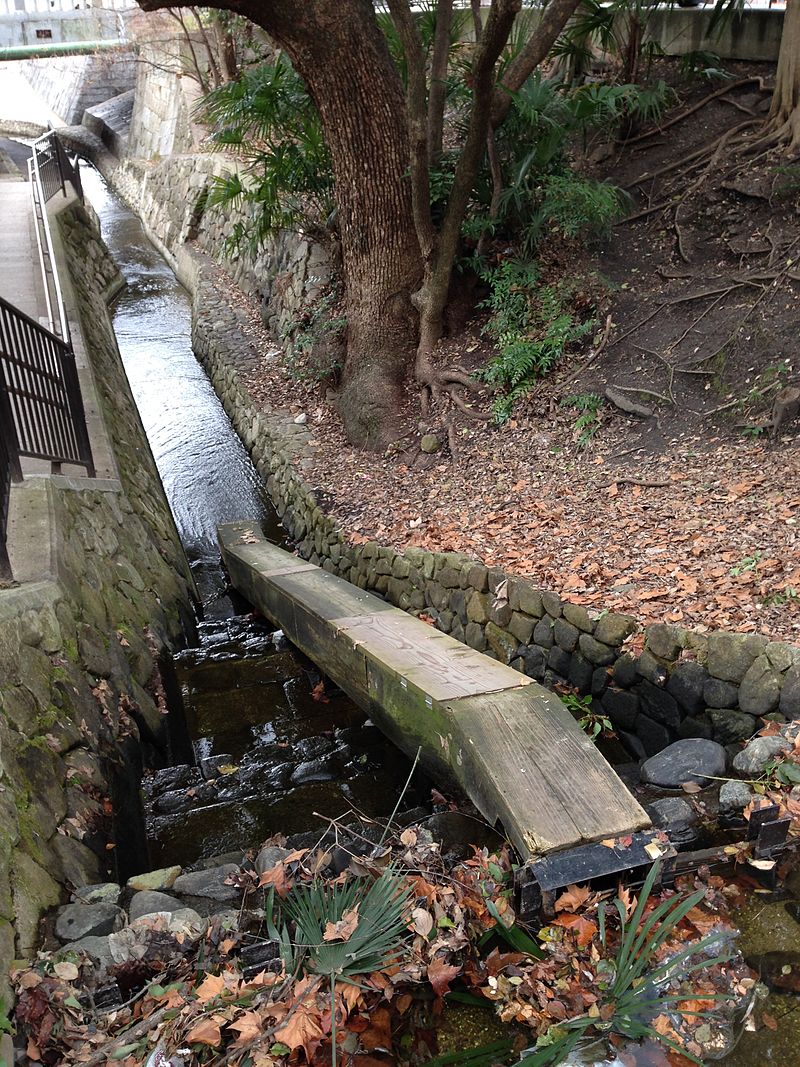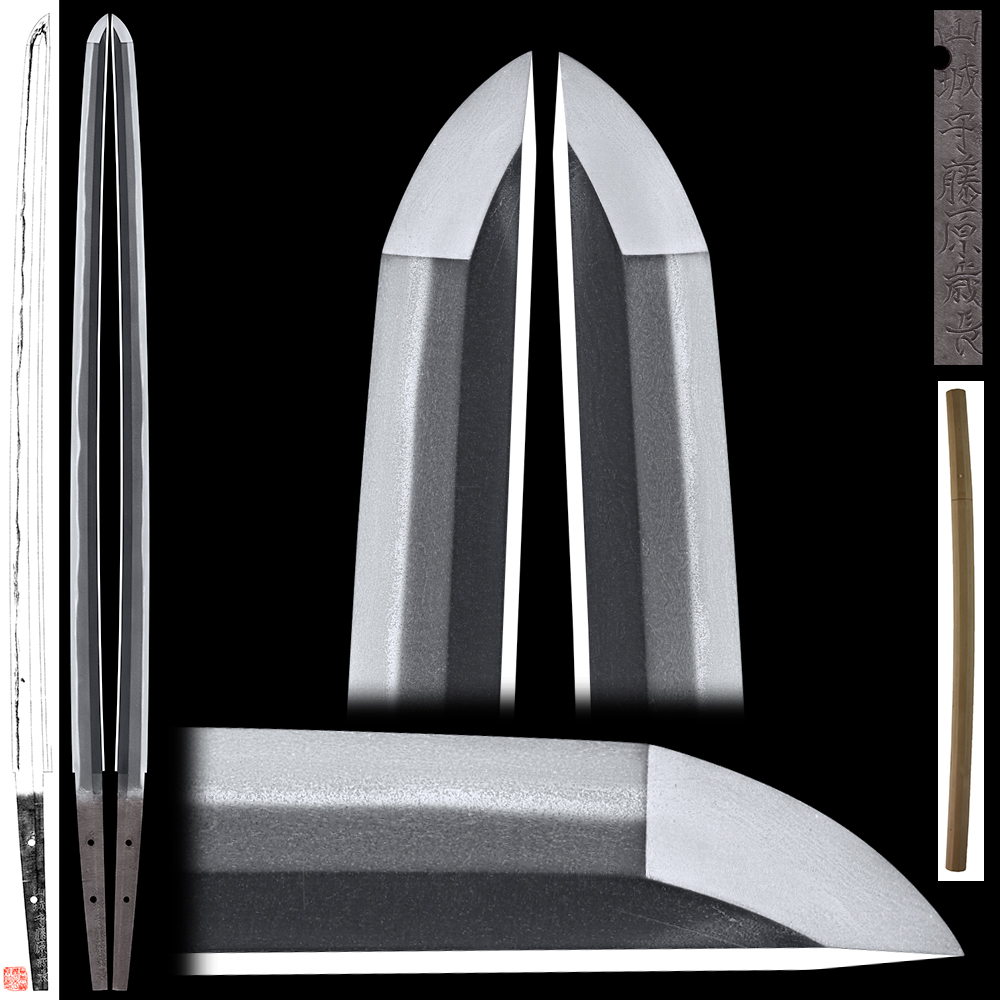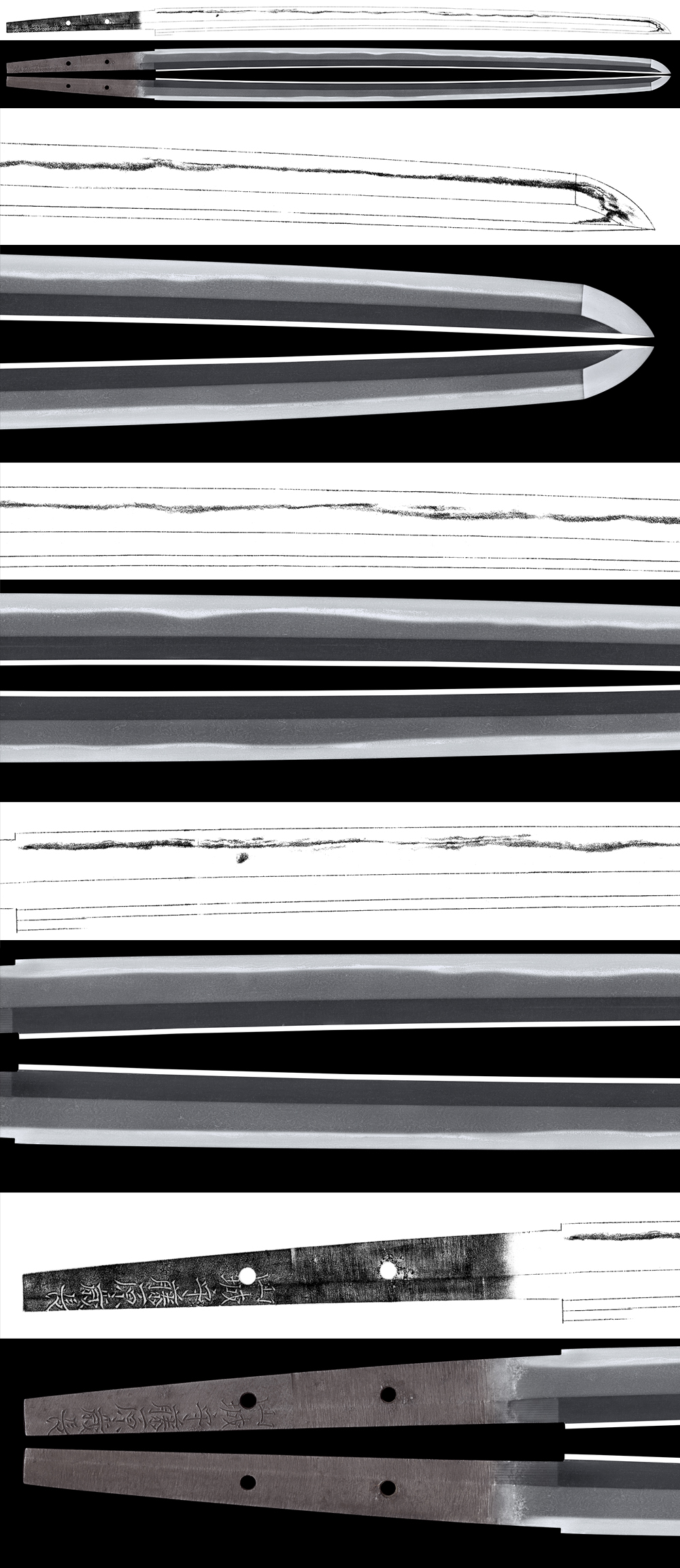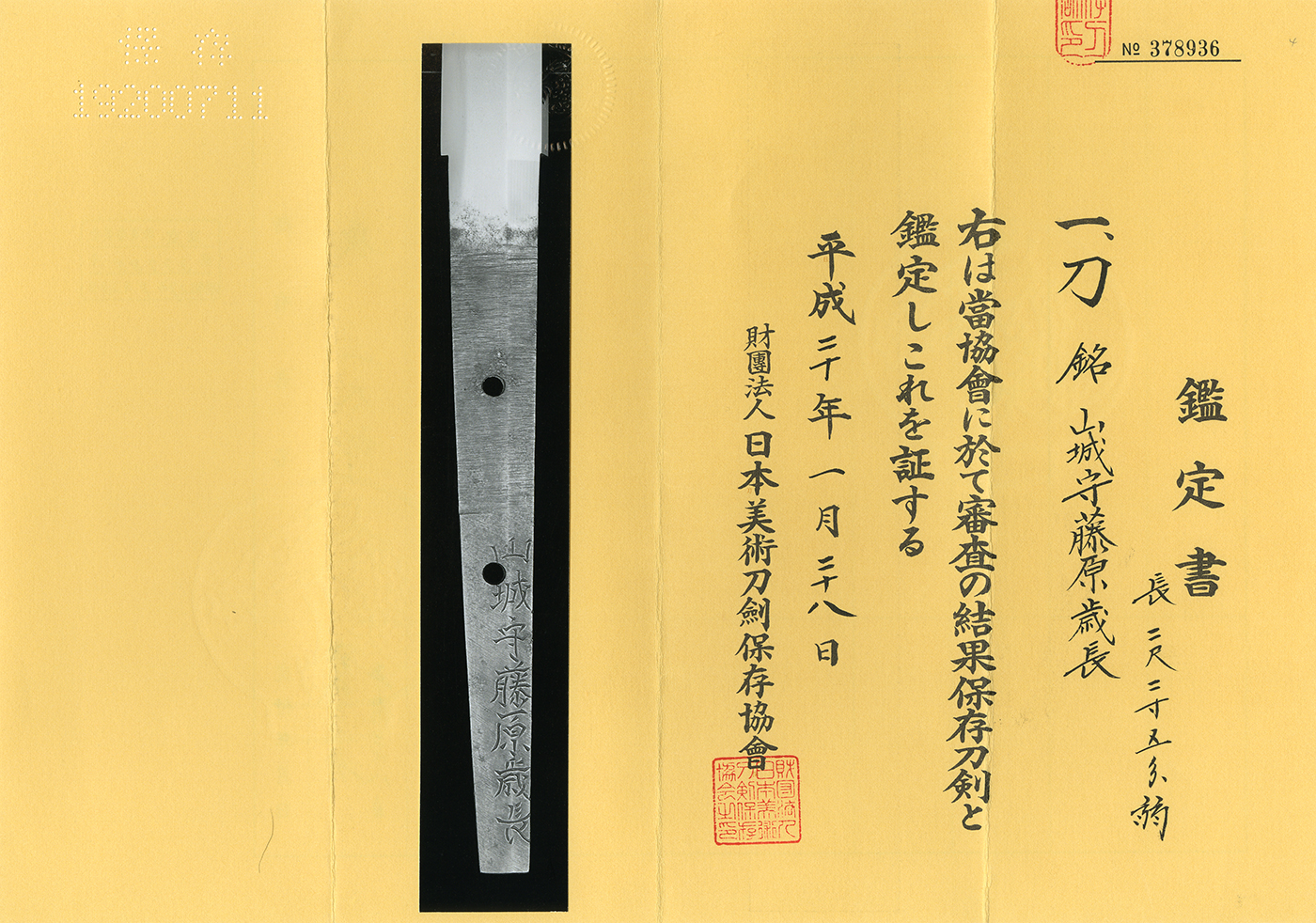Katana: Yamashiro Kami Fujiwara Toshinaga 'the first generation'
2017/01/04
Katana in Shirasaya with Koshirae.
Signature : Yamashiro Kami Fujiwara Toshinaga (the first generation)
Shinto : Josaku ranking : Ryo Wazamono cutting test ranking : Yamashiro
(We divide 4 sections for each sword as Saijo saku, Jojo saku, Jo saku and regular saku)
This sword : Yamashiro Kami Fujiwara Toshinaga. belongs to Jojo saku ranking.
The blade is polished by high ranking polisher.
Habaki : Single silver Habaki.
Blade length : 69.4 cm or 26.9 inches.
Sori : 0.61 cm or 0.24 inches.
Mekugi : 2
Width at the Hamachi :2.91 cm or 1.15 inches.
Width at the Kissaki : 1.88 cm or 0.73 inches.
Kasane :0.74 cm or 0.30 inches.
Era : Edo period Manji era. (1658~1660)
Shape : The blade is about 1.57 inches Suriage and Machiokuri style( cut shortened about 4 cm) and the blade is standard size for width and thickness, shallow curve Kanbun style.
Jigane : Koitame-hada and Mokume-hada well grained with Jinie attach and some chikei work beautiful Yamashiro style Jigane.
Hamon : Niedeki rather deep Nioikuchi Suguha and Notare Hamon.
From Monouchi area to Kissaki, Hamonbecome active Notare with Sunagashi and Kinsuji work.
Boshi is active vivid Kaen style which remind us Soshu-den style.
Special feature : Birthname of Yamashiro Kami Fujiwara Toshinaga is ‘Nimura Gizaemon’. Birthplace is Awa Tokushima province at Shikoku and then he moved to Yamashiro Horikawa.
He studied sword forging techniques from Horikawa school.
I think he was influenced by Kunihiro strongly because the Hamon looks very similar. This blade is having active double Hamon with Ashi, Sunagashi and Kinsuji working well.
Especially from the Monouchi to Kissaki area, Hamon becomes very active Soshu-den style.
This blade have Suriange and Machiokuri but the blade itself is having wonderful Jigane and Hamon without any Kizu or flaws.
Koshirae :
Saya : Black Roiro Saya.
Tsuba : Mokko shape iron Tsuba with arabesque pattern engraved openwork.
Menuki : ‘Rakan’, the ascetic monk carved on Shakudo plate with gold color.
Fuchikashira : Some design is engraved on silver plate.
Historical back ground : The great fire occurred at Nagoya castle downtown at Manji 3rd(A.D.1660).
In that ages Nagoya downtown was like massing latticework all made from woods. Most of entire town has been burned down and including high ranking Samurai's Mansions.
After that, Shogun decided to make the street more wider then before.
Those type of wide streets are called Hirokoji and can find the place named Hirokoji in every place in Japan.
Fireproofing organizations were established for 16 pieces, 1000 members.
Horikawa river remaining in Kyoto. Toshinaga forged the blade along side of this river.

NBTHK Hozon paper
Aoi Art estimation paper : whole Oshigata.





